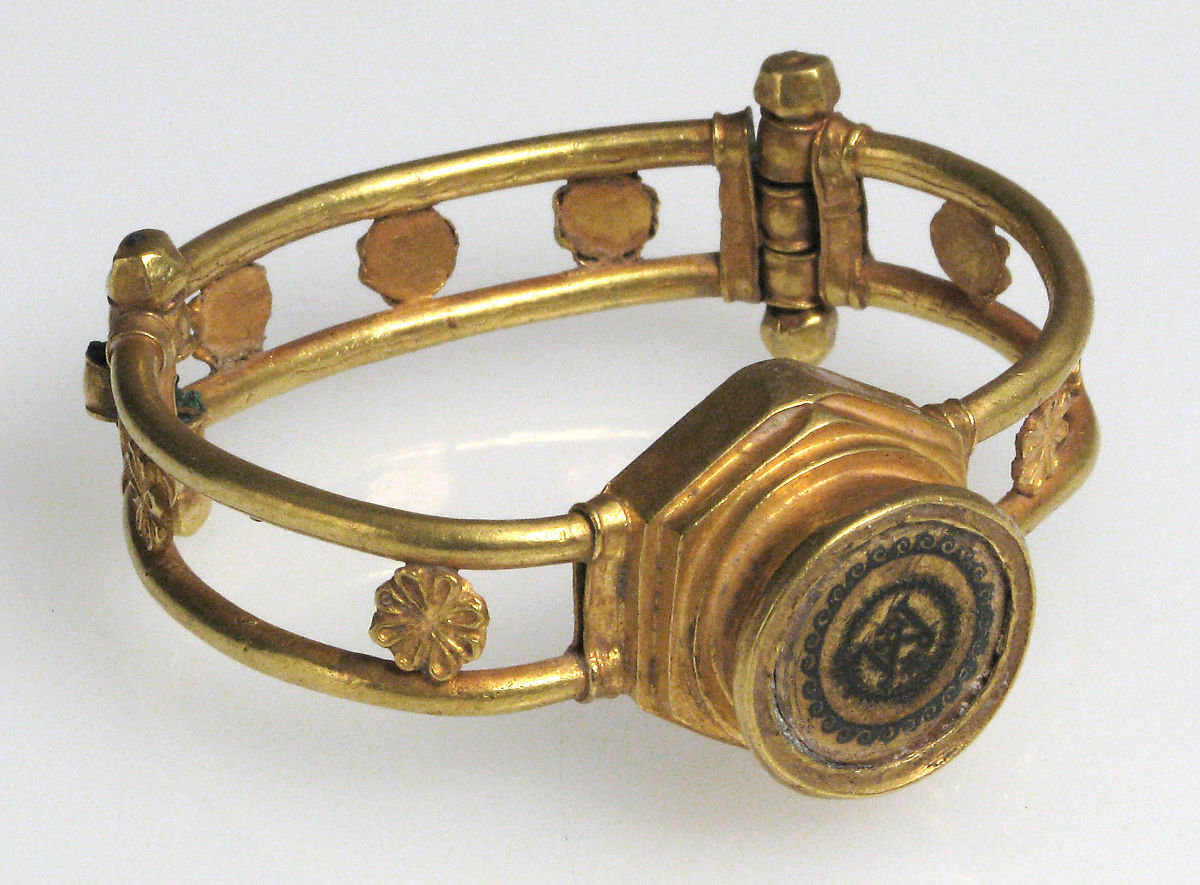My mom owned some niello (pronounced nee-el-oh) jewelry from Thailand. I always admired it and thought niello was made only in Thailand starting in the 1930s. I was amazed to learn it’s an ancient jewelry-making technique which was most common in Europe!
What is Niello?
Niello is used as an inlay on engraved or etched jewelry, usually silver. It’s a mix of sulfur, copper, silver, and lead which is black in color. The lead lowers the melting point of the niello mixture. Powdered niello is spread onto the silver. Heating the silver melts the niello, and the molten niello fills the engraved/etched parts of the design. Excess niello is removed by scraping, then the piece of jewelry is polished. The black niello constrasts beautifully with the silver.
Brief History of Niello
Niello was used in Syria as early as 1800 BCE. The Romans used niello to decorate metals. From the 900s – 1200s CE, the Ukrainians dominated niello manufacture. Niello was used on swords, dishes, horse tack, and jewelry. It was traded with the Greeks, the Byzantine Empire, and other people along the trade routes. The Mongols invaded Ukraine during the 1200s. They burned workshops and villages, and killed craftsmen and artisans. Afterwards, niello production in Ukraine almost stopped.

Photo from the Metropolitan Museum of Art, New York

The use of niello continued in other parts of Europe throughout the Middle Ages (about 500 – 1400 CE) and the Renaissance (about 1400 – 1500 CE). It peaked during the Renaissance in Florence, Italy. After that, goldsmiths working in Tula, Russia (near Moscow) in the late 1700s revived the use of niello. Russian niello is sometimes called Tula work. The French made niello jewelry which is very collectible.



Arabian niello decorations usually show rural scenes, stylized patterns, or animals. The exception is niello made for Allied troops stationed in the Middle East during WWII which sometimes showed people riding camels.

Thais have been making metal items since antiquity, but it’s not clear how the use of niello developed. American soldiers taking “R&R” in Thailand between the 1930s-1970 bought niello jewelry as gifts for their sweethearts back home. Most of it was completely handmade. Vintage niello jewelry from this period is available from ebay and other online sites.
Images on Thai Niello
Many of the images shown on Thai niello jewelry are characters from a story named “Ramakien.” The goddess of lightning (Mekhala) and the god of thunder (Ramasoon) often appear. The main theme of the story is an airborne chase of Mekhala by Ramasoon. Ramasoon threw his ax at Mekhala to weaken her. Mekhala deflected his blow with the crystal ball in her hand, creating a bright flash of light across the sky. The collision caused a booming sound. This is how thunder and lightning were created.
In Thai jewelry, Mekhala is usually shown holding a crystal in her hand that lightning bolts radiating from it. Ramasoon is shown with his ax.

Nang Fa, the Fairy of Happiness (or the goddess of wealth) also appears in niello jewelry. She drops stardust from one hand and holds a bowl in the other.

A detailed list of gods and goddesses that are shown on Thai niello jewelry is available here.
Current Use of Niello
The lead content in traditional niello makes it dangerous to work with. Lead is a health hazard to artists who prepare and use niello, and it is also a contamination hazard in the shop. Lead corrodes silver at high temperatures and all tools (files, scrapers, sandpaper) used on lead should be stored separately from silver. The smallest residue of the lead can transfer from tools to a piece of jewelry and ruin your work, not to mention your health. For these reasons, many artists have abandoned niello.
There have been experiments to substitute tin for lead in the niello recipe. This reduces the toxicity, but the sulfur still has some nasty properties. Good ventilation, the use of respirators, scrupulous hygiene, and other precautions are required when working with niello.
